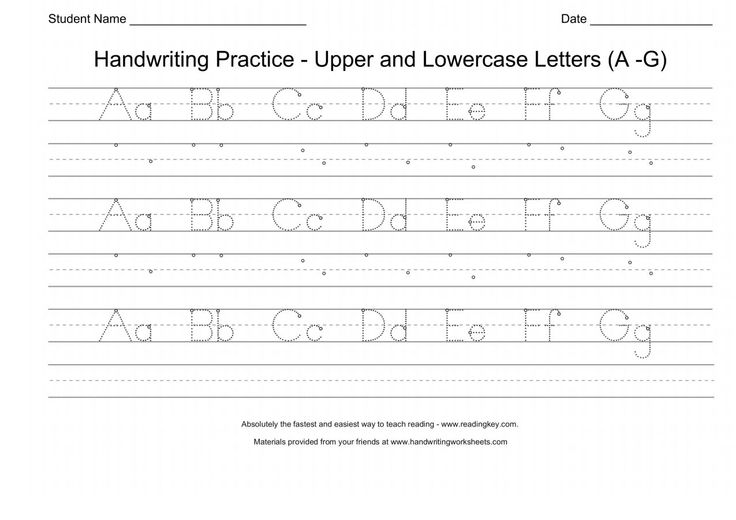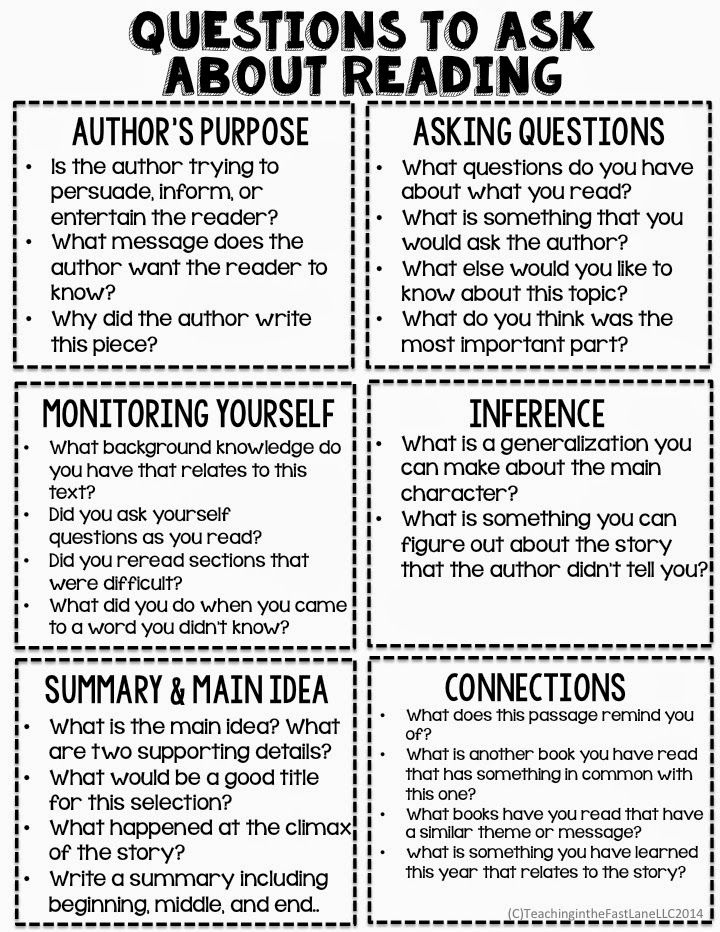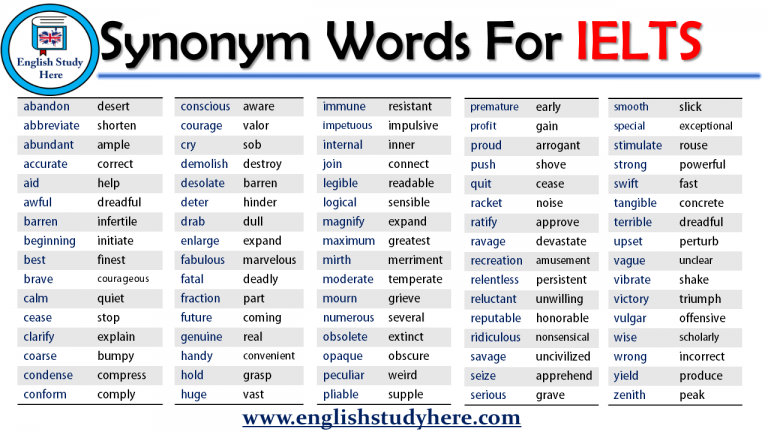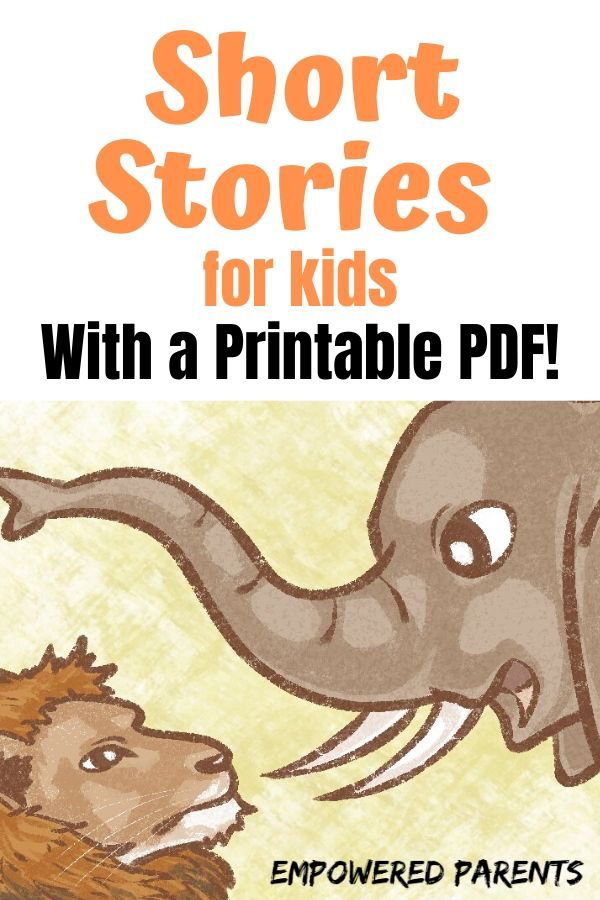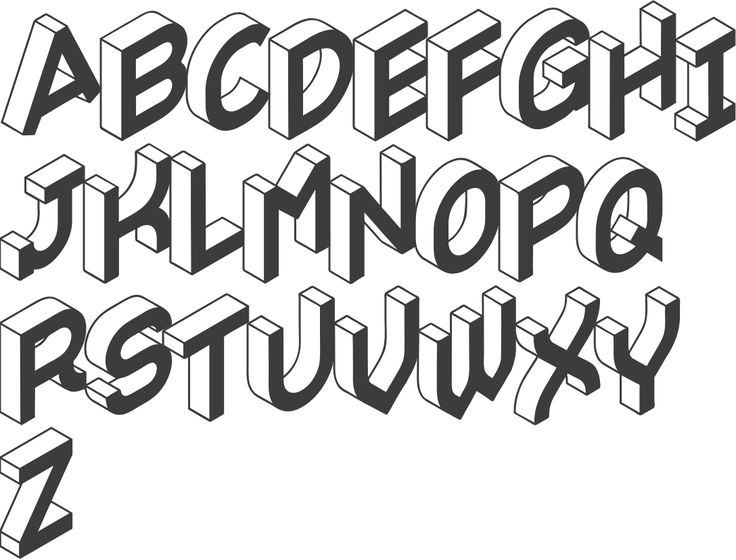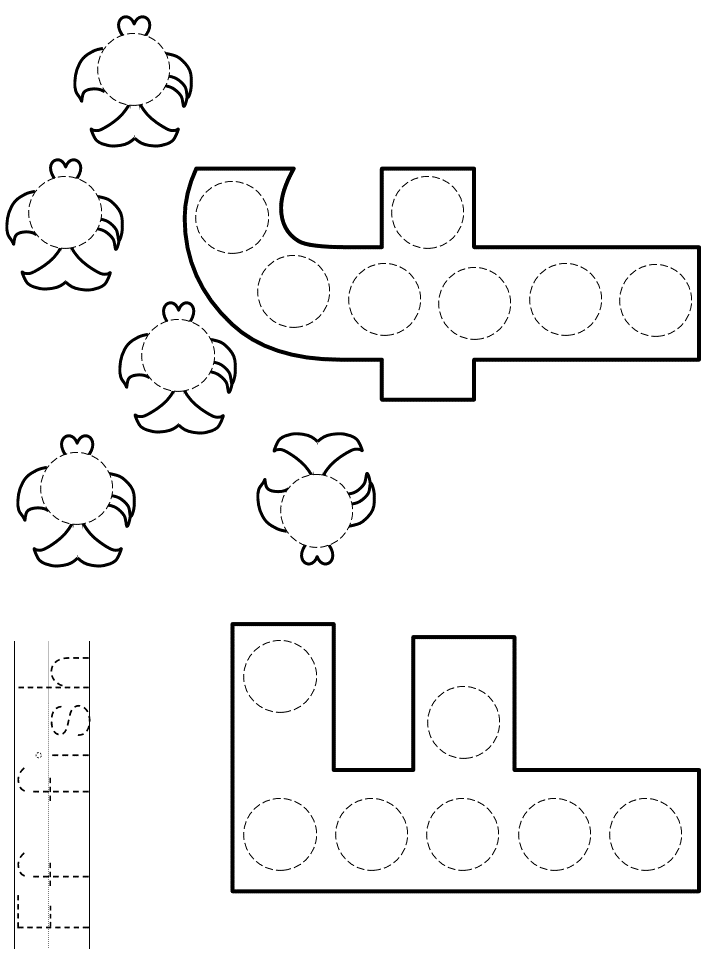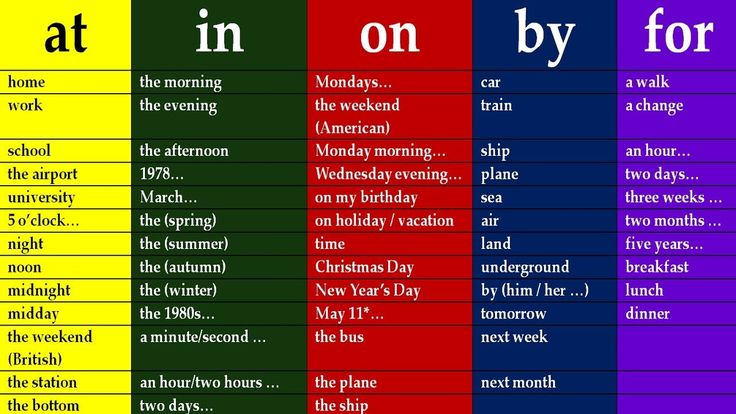How to teach numbers in kindergarten
8 Tips on How to Teach Numbers to Kindergarten
Understanding numbers is an important skill that kindergartners need to master. Children encounter and observe various concepts of mathematics since infancy, such as quantity comparison and pattern recognition. Once children reach preschool age, you can start teaching them numbers in a fun and interactive way.
Video: How to Teach Numbers to Preschool Kids
Teaching numbers to children is simple. Parents can motivate them to relate numbers with activities they perform on a daily basis. However, they will only begin to truly comprehend the meaning of numbers until they are around five years old.
When to Teach Numbers to a Child?
It is a great idea to start introducing numbers to your child after she turns one. You can start with number rhymes, like ‘One, Two, Buckle My Shoe’, ‘Ten Green Bottles,’ or 1,2,3,4,5, Once I caught a fish alive’. You can also point out simple objects or things they encounter in their daily lives, such as one apple, two dogs, three chocolates, and so on. You can make learning numbers playful and enjoyable for your child.
How to Teach Numbers to Preschoolers
Here are some tips that will help you teach numbers to preschoolers:
1. Teach Counting with Number Rhymes
Using rhymes and songs is a fun way of learning numbers for kindergartners. You can use number songs and rhymes like ‘10 Little Monkeys Jumping on the Bed’, ‘This Old Man – He played One’, ‘The Ants Are Marching One by One Hurrah,’ etc. to teach kids about numbers in an immensely enjoyable manner. Show the numbers on your fingers as you sing together with your child so that the child knows that a particular number relates to that many fingers.
2. Incorporate Numbers into Daily Tasks
Use numbers in daily tasks that your child does with you.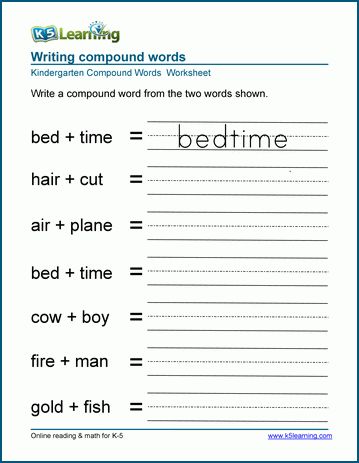 For example, ask your child to help set the table and place one fork or two spoons with each plate. You could also get her to count peas or apples, thus connecting numbers with quantities. Another idea is that you can encourage her to count her toys as they help you put them away after playing.
For example, ask your child to help set the table and place one fork or two spoons with each plate. You could also get her to count peas or apples, thus connecting numbers with quantities. Another idea is that you can encourage her to count her toys as they help you put them away after playing.
3. Play Number Games with a Group of Kids
Kids learn better when they are playing with each other. You can encourage some healthy competition in the group to motivate them, too. Get them to sit in a circle and take turns counting numbers.
4. Write Down Numbers and Make the Child Draw that Quantity
Write down numbers in a drawing book and have your child draw something that denotes that quantity. For example, write 3 and ask her to draw three flowers. For 4, you could ask the child to draw four ice cream cones. You can also do the opposite of this by drawing several quantities of an object and asking your child to count them and tell you the number.
5. Point Out Numbers on Ad Boards and Vehicles
When you go out with your child, you can point out numbers on ad boards or vehicles and thus help her recognise the numbers by sight.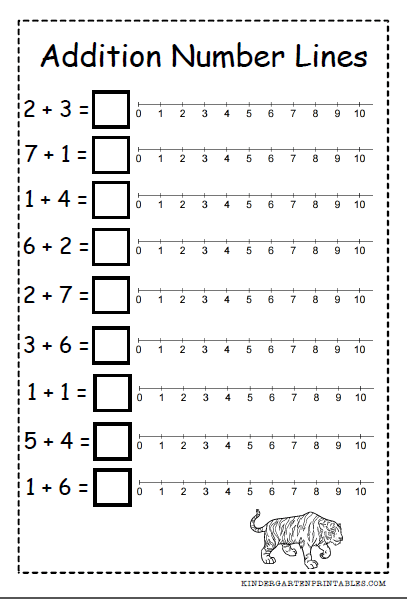 This will be helpful later on when your child begins writing numbers.
This will be helpful later on when your child begins writing numbers.
6. Teach the Order of Numbers with Connect the Dots
This game teaches kids the order of numbers. Use a chalkboard to form a shape with numbered dots. Next, help your child connect the dots to draw that shape. For example, you could use 8 dots to make an octagon shape and help your child draw an octagon. You can also buy connect-the-dots books, which have numerous drawings outlined by numbered dots. These dots need to be connected sequentially to draw the shape. Once the shape is drawn, let your child colour the shape to make the game more fun.
7. Count Fingers and Toes
Counting fingers and toes is a great way to introduce pre-schoolers to numbers. You could make them count the fingers on each hand and ask them to compare the number of fingers on each hand. You can also ask them how many big toes they have or how many little fingers they have.
8. Make and Use Flash Cards
Make flash cards with numbers zero to nine and use these to play various number games with your child.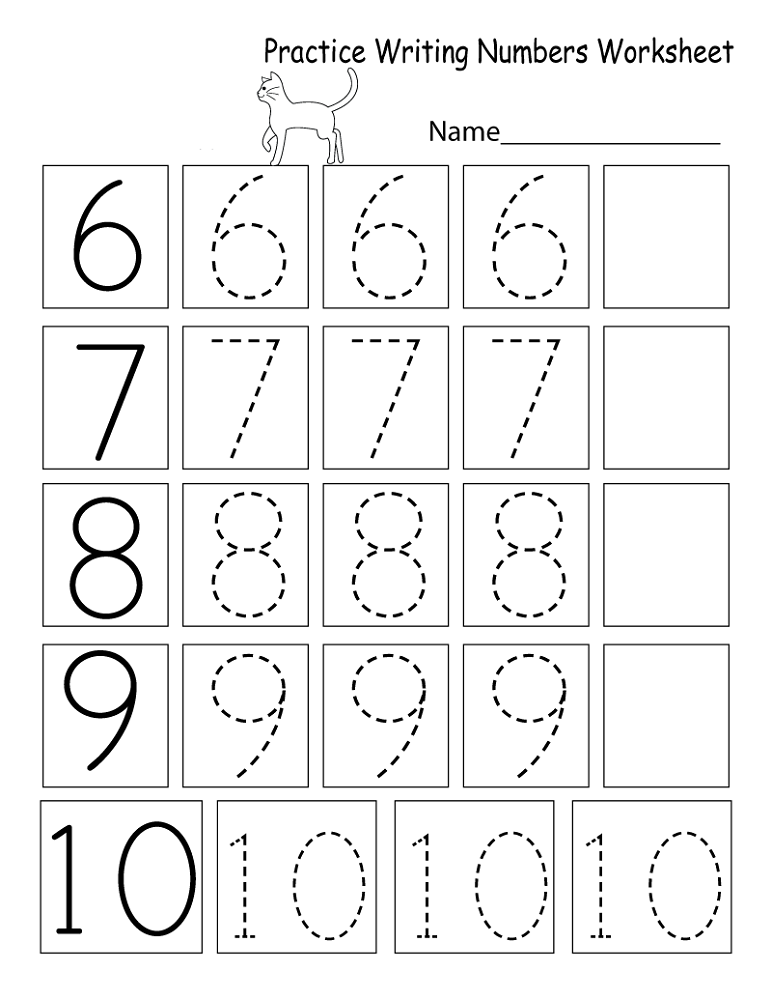 For example, you could place the numbers in a random order and help your child arrange them in the correct sequence.
For example, you could place the numbers in a random order and help your child arrange them in the correct sequence.
Children are quick learners, and they can grasp concepts with ease. Introducing numbers to kindergartners in a fun way will help them understand numbers easily. Pre-schoolers tend to memorise numbers. However, they will gradually begin to understand what the numbers mean when you relate the quantity of everyday objects to the numbers. Each child is unique and learns at her own pace. Therefore, it is advisable to avoid comparing the learning abilities of different children.
Also Read: How to Teach English to Kids
How to Teach Numbers 1-10 in Kindergarten – KindergartenWorks
Number sense and learning to write and use numbers 0-10 is a pretty big deal the first nine weeks of kindergarten.
Here is a set of materials that helps me teach kindergarteners how to form the numerals and teach them how to count one-to-one all the way to ten.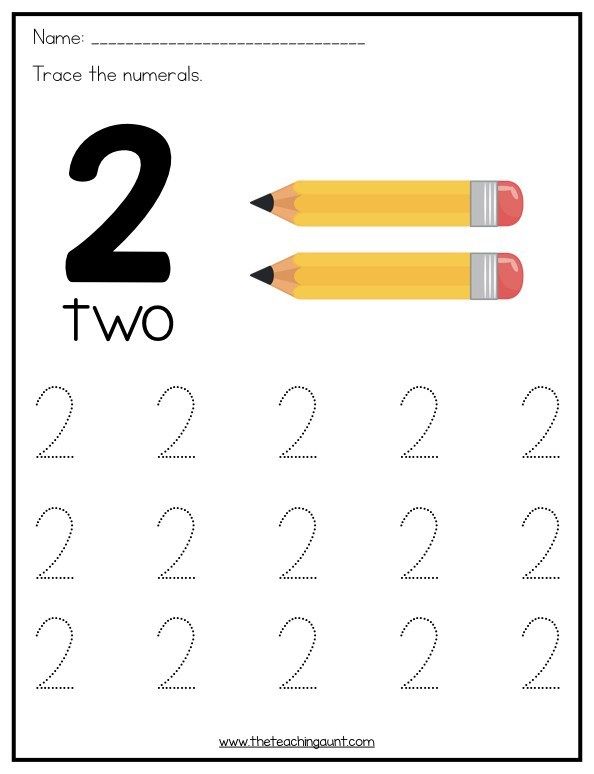
Because, let's be honest.
Lots of kinders come in counting to ten skills - and then also - lots don't. I have found that it's very common to have incoming students that can only count up to four or five objects correctly.
Here's what I created to use in my classroom and you can use it too.
Teach them with a story
Just like I've learned that teaching procedures with a story is very effective, I've learned that teaching numbers with a story is effective too.
But I didn't really like any books that existed because they didn't teach students literally "this is how you count" and "this is how to make a 4." And that's just what I needed.
So, I created the monster numbers book and also turned it into an audiobook.
My kinders love it and it helps me teach a lot in a short amount of time.
It talks about the process of counting 1:1 all the way up to four.
It capitalizes on the fact that most students can count that many objects but pushes them to see that counting uses a pattern that they can apply to every number after.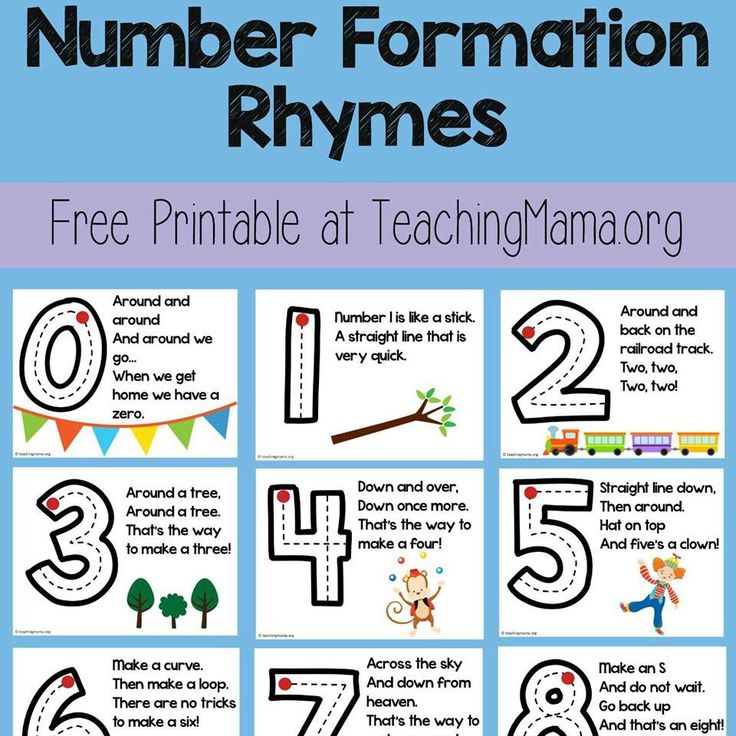
As a teacher, you simply use the repeated phrases from the book "When you touch one, you say a number. When you touch another one, you say the next number" when you are working with kids who need help counting and touching objects one-to-one.
After that, it goes over easy-to-remember number formation chants to practice forming the numerals correctly.
So you can have students practice doing this with you as you read - they quickly learn to chant along with you and can even draw numbers in the air with their finger as you read aloud.
Of course, the way to maximize teaching numbers with young students is to do this more than once.
You can print this story and read it as often as you want.
To make it more fun and interactive, let's talk about how to engage the student's whole body in order to learn how to write numbers even faster.
Teach them with a video
A video can take learning how to write numbers and make it more interactive. So, use this free Monster Numbers video for kindergarten to your advantage!
We love throwing it up on a big screen to practice forming numbers with arms, elbows, legs, and heads. So much fun!
So much fun!
It also works great if you break it up into parts to focus on just a couple of numbers!
Enjoy this free how to write numbers video - it's about 10 minutes so it is a mini-lesson in itself, but should help get kinders moving while they're learning.
Now that you've laid a good foundation by reading and re-reading Monster Numbers and showing the video a few times - it's time to give the students practice in small groups.
Teach them in small groups
Have your students create their own little Monster Numbers book and "capture" monsters by completing the pages.
I like using this as a lesson with my guided math groups.
The mini-book starts with the number 5, since that's where most kinders need work on counting 1:1 when they enter kindergarten.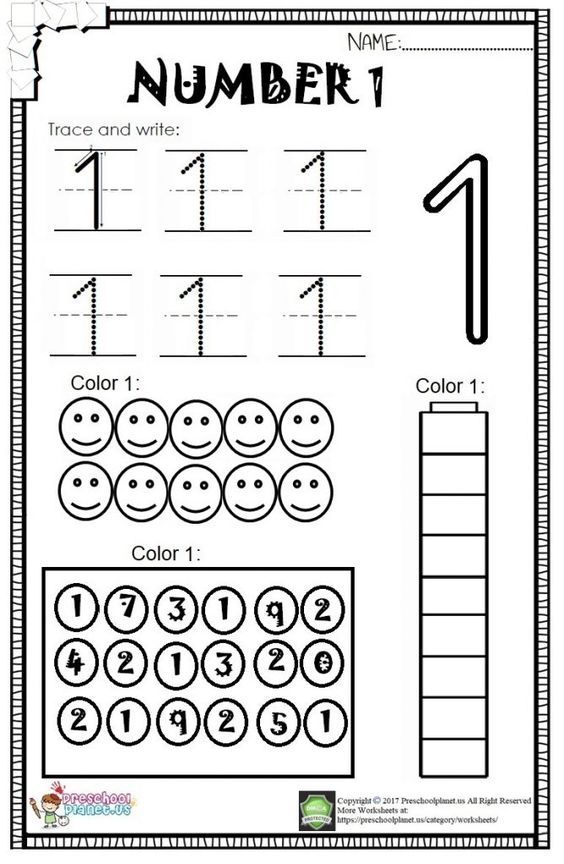
Do a few pages together, using the chants you learned from the book and video, and let students get some pencil and paper practice.
Send the little books home so that parents can see what students are working on.
Use the number handwriting chants any time you can
Now that your students can practically recite the whole video along - it's time to use those easy-to-remember chants any time your students are working on writing numbers, or need help with writing numbers correctly.
Whenever students are attempting to write on their own, or you are writing numbers in front of the whole class (like during calendar time) - use the chants!
Prompt students with a few words and let them finish saying it aloud.
Send home a set of the chants to go home to parents so they can use them at home too!
Hopefully, these will earn some at-home fridge space for a few weeks. {wink}
Teach what is a ten frame
Help your students quickly develop number sense by helping them see numbers in an organized way.
Introduce a ten frame - using a ten frame has been critical for me to teach so many math skills. But, let me make it easy for you. Your kids have already been exposed to one!
The "monster keeper" from the book is a ten frame.
It's a great visual for kinders and you can print as many monster manipulatives you'd like.
Use the ten frame whole group or with your small groups as needed -they are fantastic for exploring how to count, touching objects 1:1, and getting to know the layout of a ten frame.
Teach them how counters of any kind can be placed into a ten frame to help objects stay organized and make it easier to count.
Down the line in the school year, students will learn that 5 on top and 2 on the bottom is 7 without having to count each object. That's powerful when it comes to teaching your students how to subitize larger numbers.
For now, teach them what a ten frame is and use it often for counting.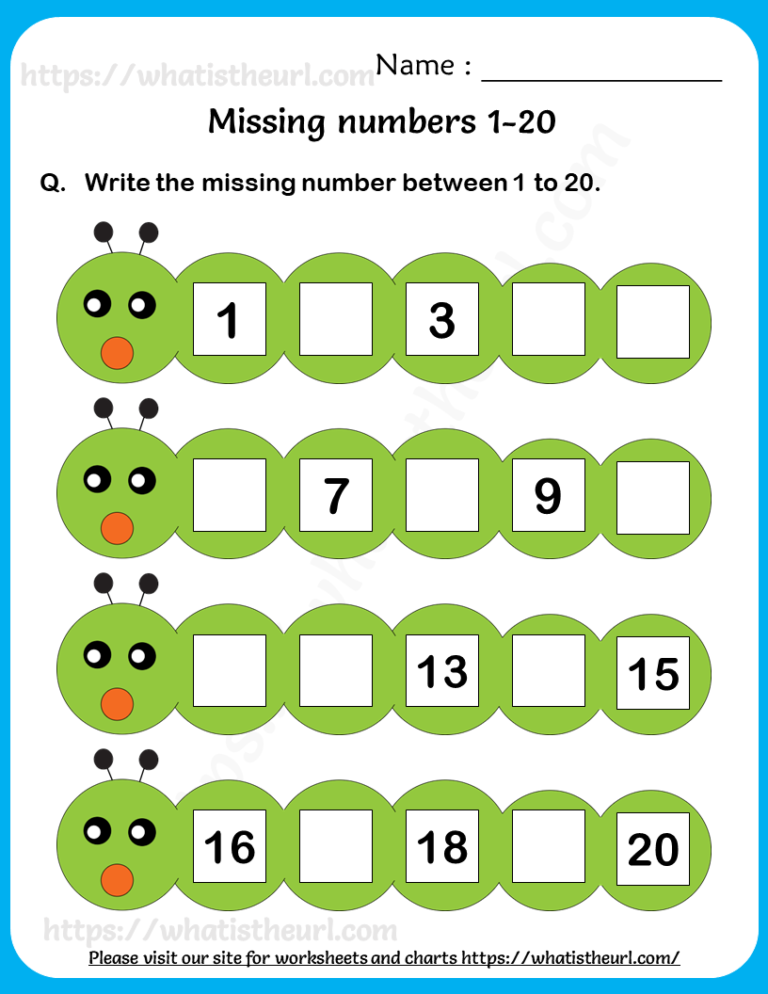
Related: How to make ten frame manipulatives
Use some independent activities
You've taught counting 1:1 and how to form numbers as a whole group, in small groups and now you need to give students lots of practice doing this on their own using independent activities.
There are tons of printables, simple games, and center activities out there that can help you accomplish this.
I made a center activity that didn't need an explanation of how to do it. This way I could use it at the beginning of the school year when kinders aren't very independent workers yet.
Since most students come into kindergarten with the general concept of how to do a puzzle - I simply made ten frames into number puzzles to bring it all together.
There are two different kinds of puzzles to allow for differentiation.
The 3-piece number puzzles all have the same shape which means they have to count if they are to get the puzzle correct.
Revisit what worked
If you've been teaching students how to count and how to form numbers:
- whole group
- in small groups
- with independent activities
and using the number chants whenever you can - your students will be well on their way to using numbers - not just learning them - in kindergarten!
Since the monster number ten frames are kinder-friendly, it's easy to use them again when it's time to introduce a new skill.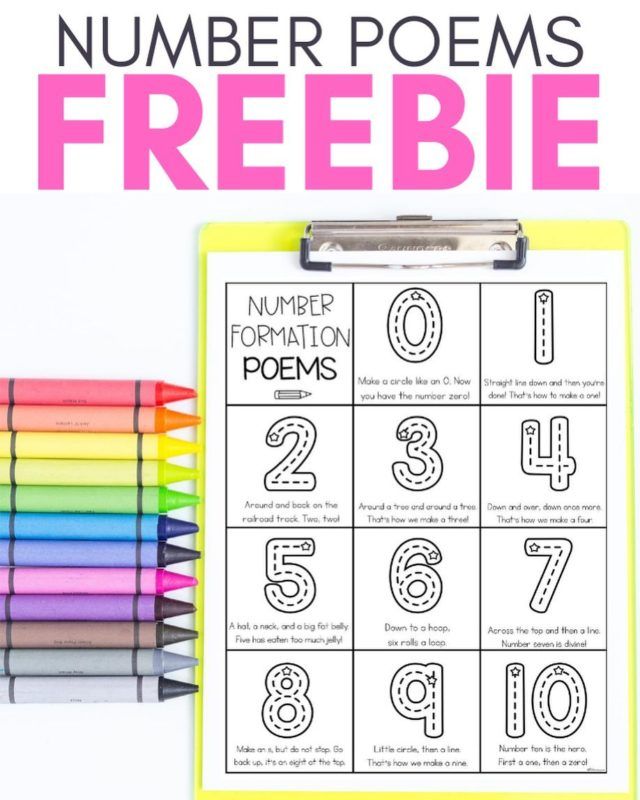
Once they know numbers to 10, it's time to dig deeper into numbers 0-5.
A special note - making 5 is a huge concept in kindergarten, so don't skip, ignore or gloss over it!
And then you're ready to focus on digging deeper into numbers 5-10.
Since I kind of loathe worksheets, I've made ten frame workmats. They are great for giving students a target number to make in different ways.
Students practice different ways of making numbers 5-10 You can use the workmats along with the recording sheets if you want.
They were fun to make and I love the idea of even using bingo-daubers for representing items in a ten frame. In this case, those daubers will create fantastic monsters.
Get Monster Numbers
If you love the idea of using this printable book and any of the printable resources, you can purchase the Monster Numbers Pack here:
Go to Purchase
You'll get:
- the 35-page printable "Monster Numbers" book
- Audio recording (mp3) of this book read aloud by me
- CD label image
- 3 differentiated sets of number puzzles (Matching numbers to ten frames 1-10)
- Handwriting 0-10 chant poster/parent resource
- 11 page "My Monster Numbers" mini-book
- 5 workmats and 5 matching recording sheets
- Manipulative monster pictures and monster-themed ten frames (Monster-Keepers)
Bonus: Teach them with playdough
I love teaching things in tactile ways.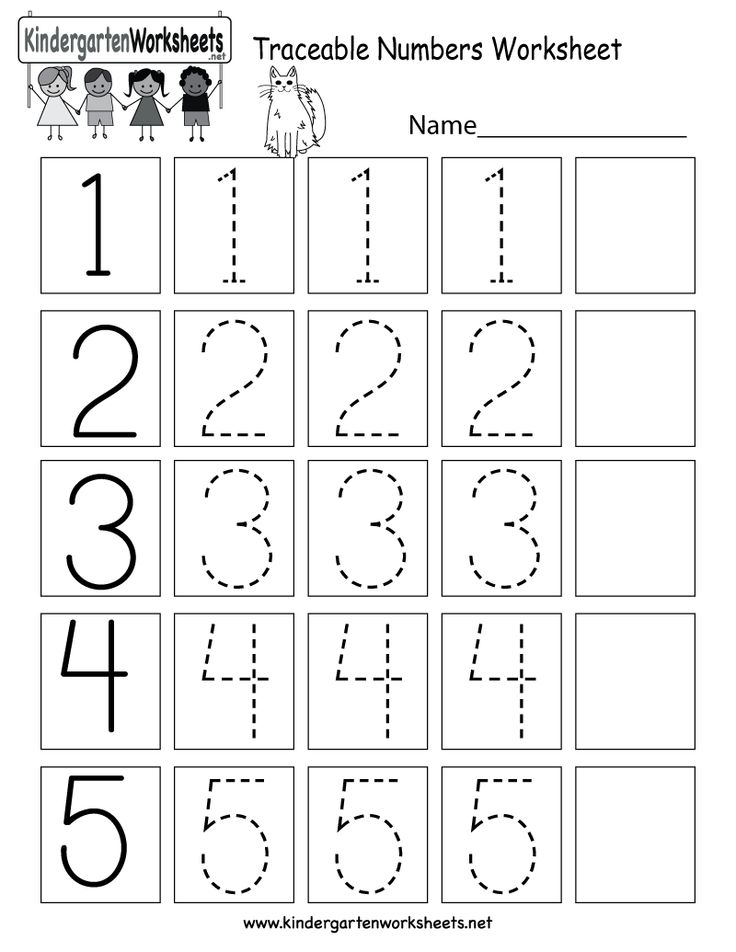 Playdough is a staple material in my kindergarten classroom.
Playdough is a staple material in my kindergarten classroom.
So, I made sure to create an independent activity that uses playdough to practice forming numbers and counting to ten.
These bonus playdough numeral formation and ten frame work mats still feature the monster keeper and familiar monsters - but transition students into using a plain ten frame to count their playdough monster balls.
You can simply laminate or slide the pages into a plastic sleeve and you're set to go!
Go to Purchase
Let's wrap it up
Teach numbers 1-10 in kindergarten by using: whole group, small group and independent activities.
Be sure to use books, videos, chants and get students moving and manipulating objects or playdough whenever you can to make it hands-on.
You're sure to maximize the time you spend teaching numbers to ten this way.
I hope that the Monster Numbers video and printable resources can help make it easier to quickly implement in your kindergarten classroom.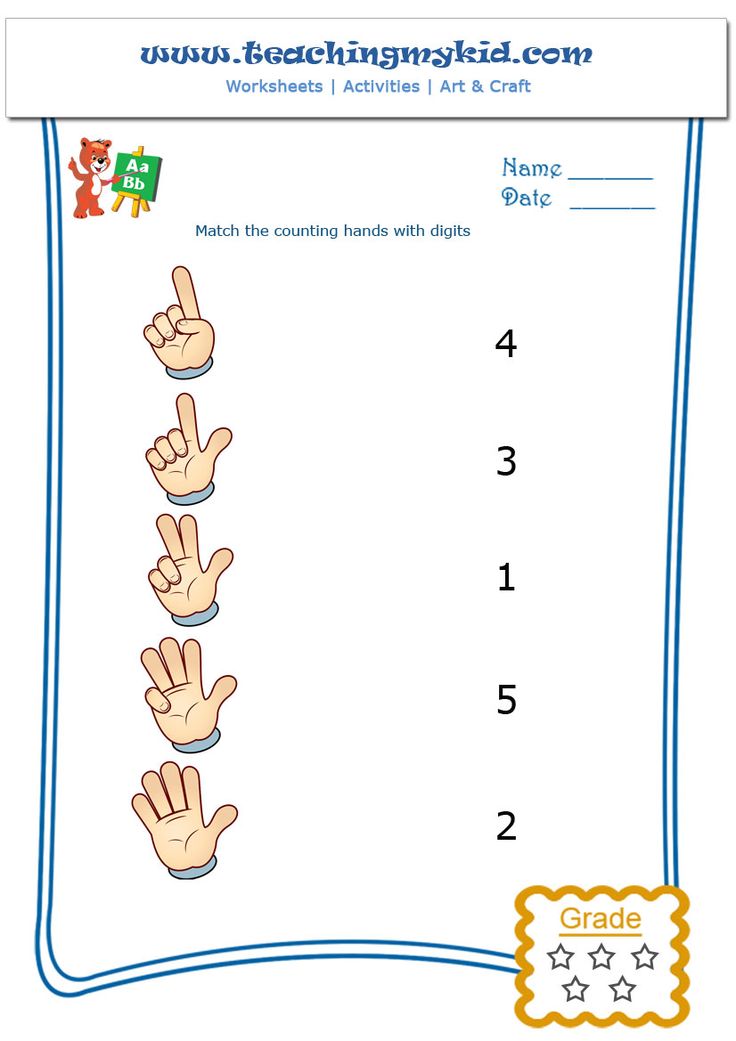
If you like what I do here on KindergartenWorks, then be sure to subscribe today. I look forward to sharing ideas with you weekly.
More Math
- Making 5 Fluency Ideas and Games
- Learning Teen Numbers in Kindergarten
- Teach: How to Draw a Ten Frame
- 2 Activities and 5 Videos to Teach 2D Shapes
Math class in the middle group "In the country of numbers" Kindergarten No. 30 | Plan-summary of a lesson in mathematics (middle group) on the topic:
Lesson in mathematics in the middle group "In the country of numbers" Kindergarten No. 30
Lesson in mathematics in the middle group is designed to teach children to distinguish and name known geometric shapes: a circle, square, triangle, quadrilateral, oval and group them by color, improve the ability to determine the position of geometric shapes in relation to each other, learn to count within four and correctly find the place of a number in ascending order. nine0003
Tasks:
Educational:
- teach children to distinguish and name known geometric shapes: circle, square, triangle, quadrilateral, oval and group them by color.
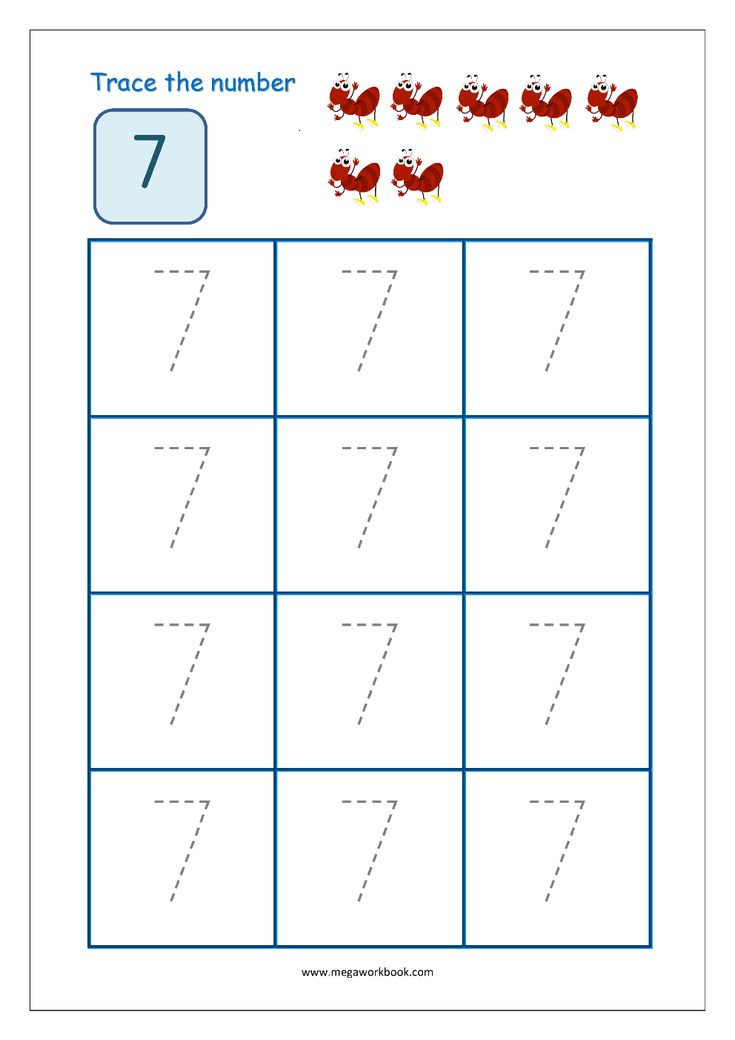
- improve the ability to determine the position of geometric shapes in relation to each other.
- teach children to count within four and correctly find the place of a number in ascending order.
- repeat verses about numbers within four.
- to expand the stock of words with the opposite meaning (antonyms) through the game "On the contrary". nine0012
- to form the ability to find a house according to a given number. (P.I. "Find your house")
Developing: to develop the ability to count and answer the teacher's questions.
Educational: to cultivate perseverance, the ability to work in a team.
Materials: 3 hoops with numbers 1, 2, 3; medallions for each child with numbers, a dog toy, a painted rug, 3 bear toys.
Handout: cards with numbers up to four.
Preliminary work:
- Geometric Lotto game.
- Shape and color game.
- Find your house game.
- The opposite game.
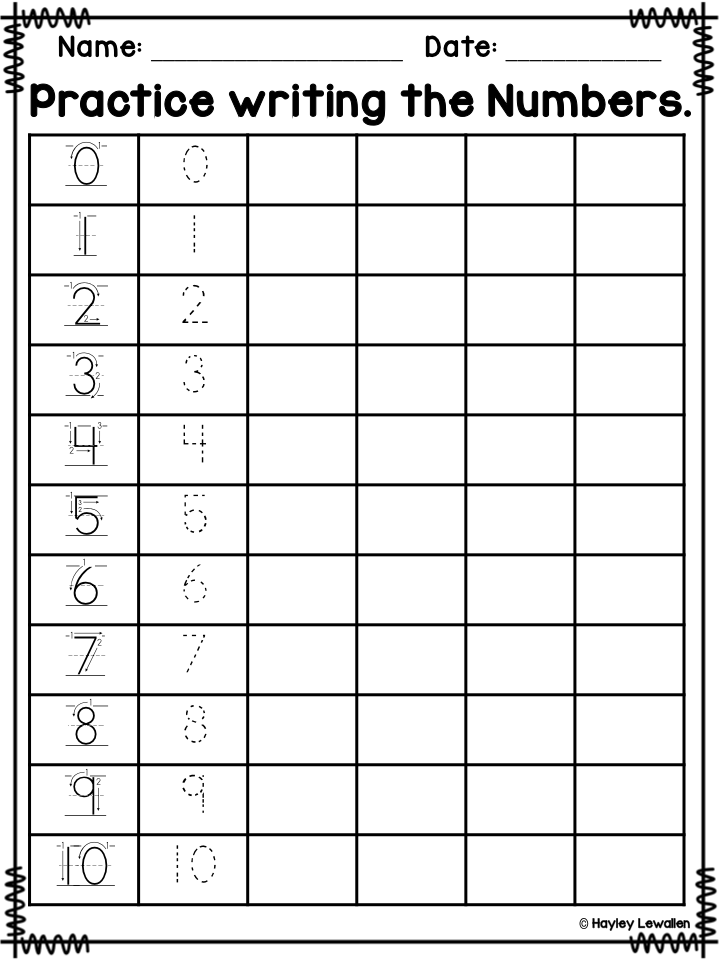
- Game "Extra Four"
- Game "Live Numbers".
Course of the lesson
- Guys, what do you think you can go on a trip? (by plane, train, car, etc.)
- You are correct. Shh! Guys, do you also hear that knocking? (yes)
- While we were talking about the trip here, it seems that someone came to visit us. (Walk to the door)
– Indeed, the dog has come. (I bring in a toy)
The dog heard that you will play today, she wants to play too. Shall we play with her? (yes) And the dog's name is Bobik.
– Bobik, what did you bring? Oh, turns out guys, that's the rug he sleeps on. And what an interesting, unusual. You are Bobik, sit down, and the guys and I will look at your rug.
– Guys, what geometric shape does the rug look like? (per rectangle)
– What is the rug decorated with? (geometric shapes)
– What geometric shapes do you see? (triangle, circle, oval, square, rectangle)
- What color are they? (blue, red)
– On which side of the carpet are the blue geometric shapes? (on the left)
– And the red ones? (on the right)
- And what figure is on top of the circle? (triangle)
– From the bottom of the circle? (oval)
– And between which figures is the rectangle located? (between square and triangle)
– Well done guys, did you like the rug? (yeah)
- Guys, Bobik asks if you and I know the numbers.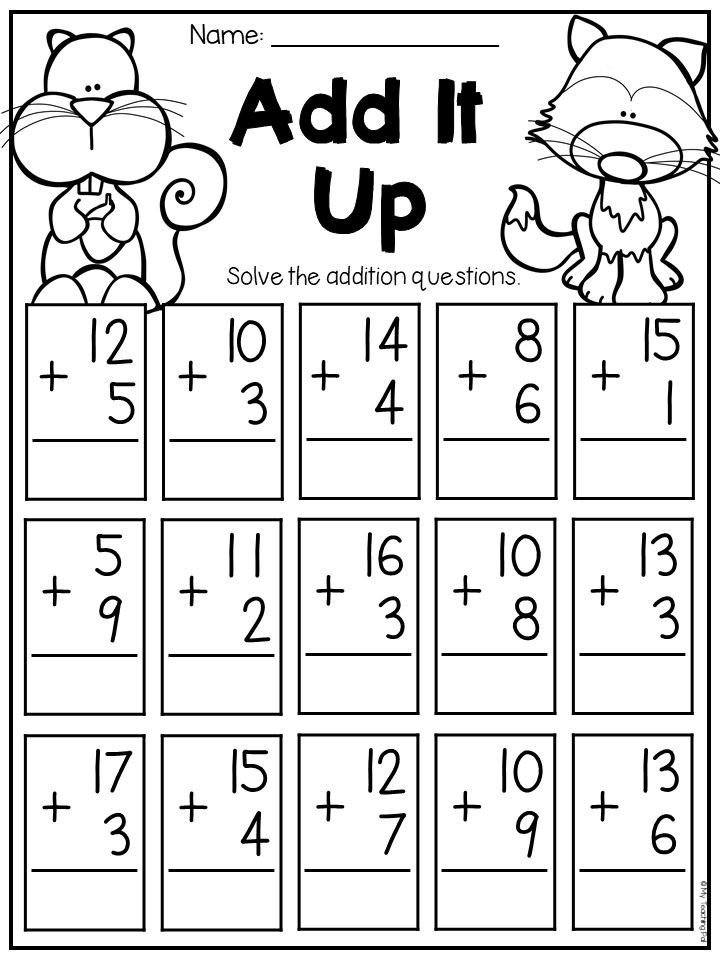 Bobik, the guys know the numbers. You will be convinced of this. Now we will play the game "Live numbers".
Bobik, the guys know the numbers. You will be convinced of this. Now we will play the game "Live numbers".
Live Numbers Game
Rules: 4 children receive numbers from 1 to 4, the leader is chosen and put the numbers correctly in order. The game is repeated 2 times.
– Amal, where will you put Alena?
– Nikita, what, after whom will you put?
- What do you guys think, did Amal arrange the children correctly? (children's answers)
– Well done! And now let's have a rest, do a physical education minute.
(I spend a physical education session with the children)
- Bobik, we know another game, it's called Find the Number.
Find the number game
- Guys, you have plates laid out on the tables, and there are numbers in them. Let's show Bobik a number that indicates how many spouts he has? (children show)
- What is the number Vyacheslav? Amal? (one)
- Bobik, the children showed correctly that you have one nose.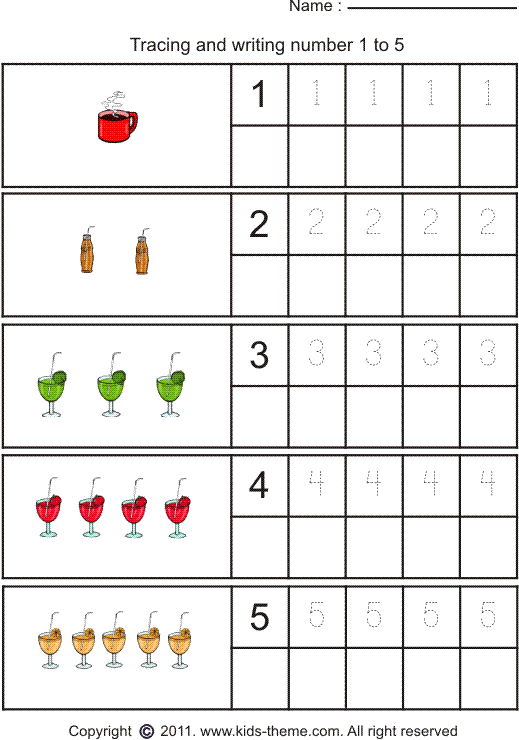 And let's tell Bobik a poem about the number one. nine0003
And let's tell Bobik a poem about the number one. nine0003
Here is one, or one -
Very thin, like a knitting needle.
Now show me the number that indicates how many eyes Bobik has?
- What number are you showing Nikita? (two)
– Nastya, look at Bobik, how many eyes does he have? (two)
- And what poem do we know about the number two?
And this is the number two.
Admire what it is like:
The deuce arches its neck,
Dragging its tail behind it.
- Well done guys. Guys, we read a fairy tale about bears that live in the forest. Let's count them, how many there were. nine0003
There lived… dad, mom and a little bear (showing toys)
Now show me the number that indicates how many there are?
- What number is Danil showing? (three)
– Polina, how many bears were there? (three)
About the number three, what poem do we know? Tell Angelina.
Look at this,
The number three is speaking.
Troika is the third of the badges.
Consists of two hooks.
- Let's show Bobik a number that indicates how many paws he has? (I go with the dog to the child). nine0003
– Sasha count how many paws the dog has? (four). Did you show correctly? (yes)
– And you, Igor, what number did you raise? (four)
- Bobik, we also know a poem about the number four.
Look, four is a chair,
Which I turned over.
– What good fellows you are! And you, Bobik, did you like the answers of our children? Since we liked it, we want to play one more game. Will the guys show Bobik the game "On the contrary"? (yes)
– Well, then I invite you to the rug. nine0003
– Bobik, you and I are coming with us.
Reverse game
Rules: children stand in a circle, I throw the ball to the child, saying "wide". The child catches the ball and returns it with the words "narrow". I use the parameters of magnitude, weight, time concepts, etc.
Long - short,
Large - small,
Low - high, etc.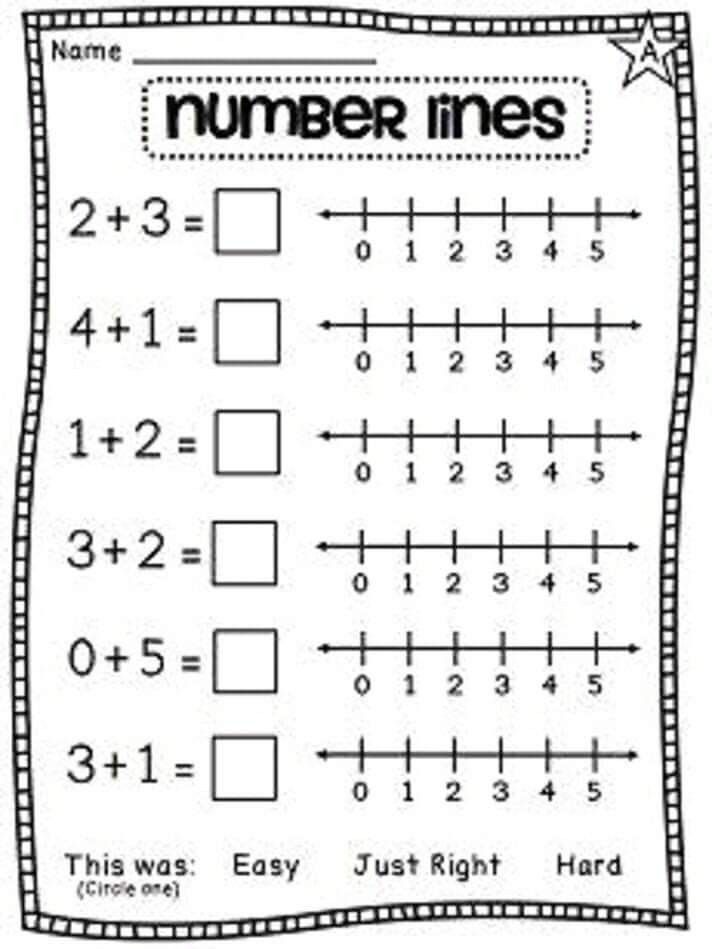
- Everyone was named correctly. Well done! Bobik, stop sitting, come play with us.
Find your house outdoor game
Rules: There are 3 hoops on the floor inside each hoop of numbers, from 1 to 3. By the number of the medallion, the children look for their houses.
Together with the dog we check the correctness of the task, I ask the children questions.
- Well done, guys. (I praise the children) Bobik really enjoyed playing with us. Let's ask Bobik to stay in our group, (stay Bobik). He agrees, Bobik stays.
How to teach a child to count
nine0002 1780 Learning numbers with a child and teaching him to count is not an easy task. But any parent knows that you need to get acquainted with mathematics at a preschool age. If a kid at 5-6 years old masters the composition of the number and counting within ten, then it is more likely that at school it will be easier for him to cope with tasks.
How to interest a child in mathematics?
First, follow the basic rules:
- 1. It is better to learn numbers and numbers not at the table, but in the game or immediately in practice. For example, have the child count the ingredients for a cake or a button on a shirt. nine0013
-
develop attention, memory, thinking, speech - namely, this is the basis for successful schooling;
- nine0002 help to learn letters and numbers, learn to read, count, solve examples and problems, get acquainted with the basics of the world around;
-
provide quality preparation of the child for school;
-
allow primary school students to master and consolidate the most important and complex topics of the school curriculum;
-
broaden the horizons of children and in an accessible form introduce them to the basics of various sciences (biology, geography, physics, chemistry).
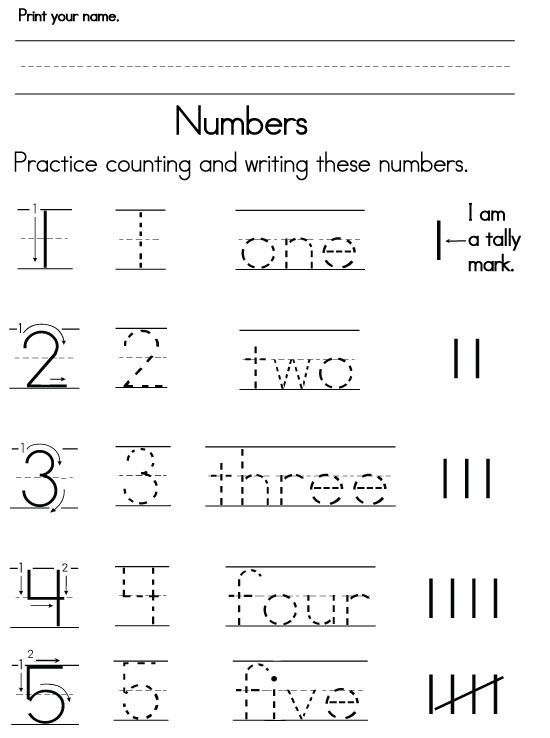
Learn more
- 2. Practice when the baby is in a good mood. Try to evoke positive emotions in him. So the information is better remembered.
- 3. First, choose easy examples so that the child can cope with them. And when he successfully masters the first task, he will definitely want to repeat the success. At the same time, do not forget to praise the child.
- 4. Practice constantly, each time using something new. This is how you maintain interest and form a habit. nine0013
- 5. If the child fails to solve the task - do not get annoyed, but try to explain in practice. After all, the main thing in 5 years is not to learn the basics of mathematics, but to form an interest in studying it in the future.

How to learn numbers:
Draw and hang in the child's room a number series from 1 to 20. It will always be in front of your eyes and will be remembered. Play the game of "jumping finger": point your finger in a chaotic order of the numbers from this row and ask for a number. Draw separate cards with numbers from 1 to 20 and ask the child to name them. In the first case, the baby remembers the ordinal arrangement of numbers, and in the second, he learns to recognize them randomly. nine0003
Make these cards: draw a number on dark cardboard with PVA glue, dip in semolina and dry. We work with these cards like this: the child circles the number with his finger as it should be written according to the rules, and pronounces the association aloud. For example, the number 1: first draw a tail with your finger from the bottom up, and then a straight stick down, saying: "Beak, leg." For numbers 2 - "Head, neck, tail"; 4 - "Back, seat, leg", etc. Come up with your own associations to better remember.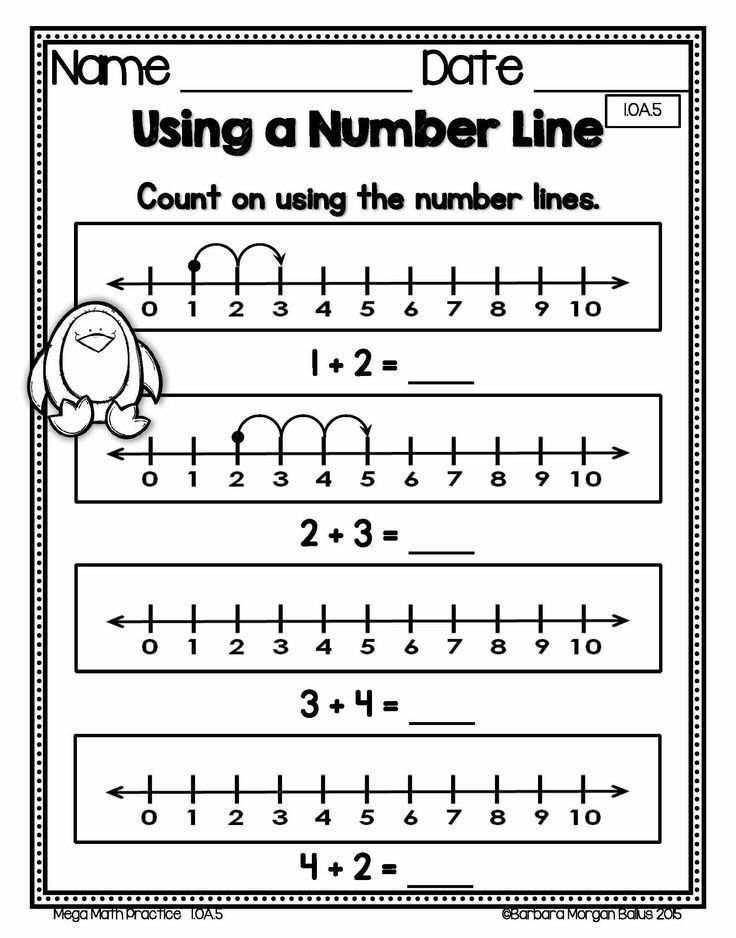 In this exercise, children visually see the number, feel it tactilely, remember the spelling, speak out loud and reinforce it with associations. nine0003
In this exercise, children visually see the number, feel it tactilely, remember the spelling, speak out loud and reinforce it with associations. nine0003
You can get acquainted with the numbers and complete tasks online to consolidate knowledge on our website in the "Counting and Numbers" section.
How to teach counting:
In order for a child to learn to count, he must master the composition of the number, that is, understand that the number 5, for example, consists of a combination of the numbers 2 and 3, 1 and 4, etc. And for this, we first show the numerical value of the number 5 on real identical objects. For example, 5 is 5 spoons, apples, etc.
Play the game "Let's share" as often as possible. Take 5 sweets and offer to share between two. Ask the child: "How will we divide the sweets? How much will you take for yourself, and how much will you give to me?" Show that 5 sweets can be divided like this: 1 for mom, and 4 for baby, 2-3, 3-2, 4-1. And be sure to show that you are not counting empty numbers, but numbers that represent real candies.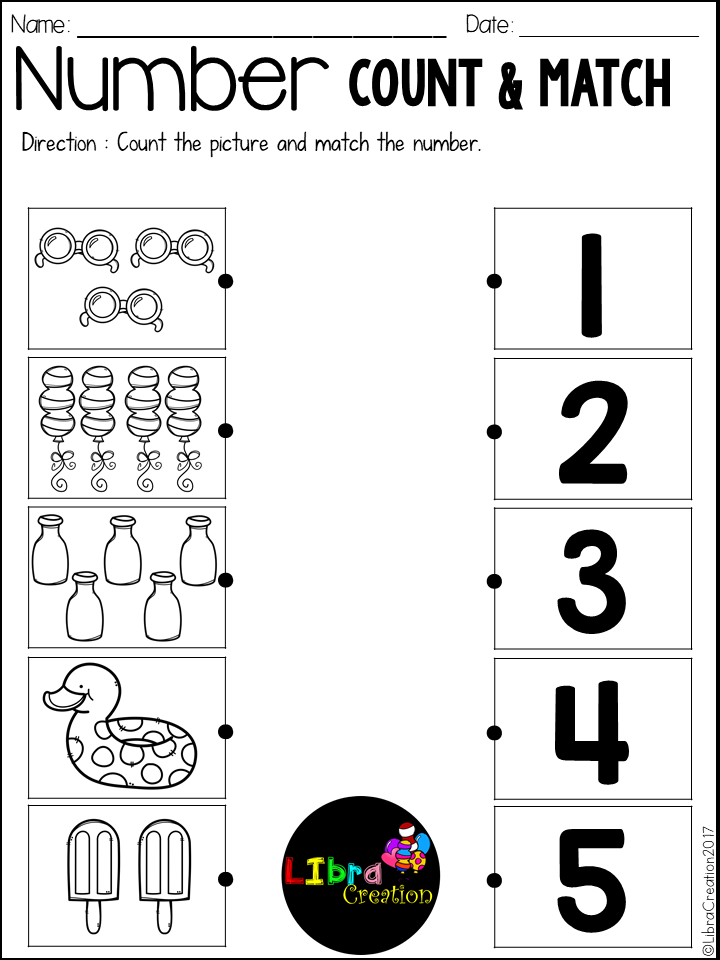 nine0003
nine0003
You can also play this game: take 5 buttons (or other small items), first show the child that there are 5 of them, count with your finger. Then hide your palms with buttons behind your back and ask the child: “If I have 2 buttons in my right hand, how many in my left?” And then invite the kid to ask you a riddle. Guessing, sometimes "make mistakes" - children love to "catch" adults on mistakes.
Having mastered the composition of the number, the child will easily understand the basics of addition and subtraction.
nine0002 Tasks for ordinal counting and comparison for preschoolers are recommended to be completed on the page "Assignments in mathematics for children 5-6 years old."Did you like it? Share with friends:

